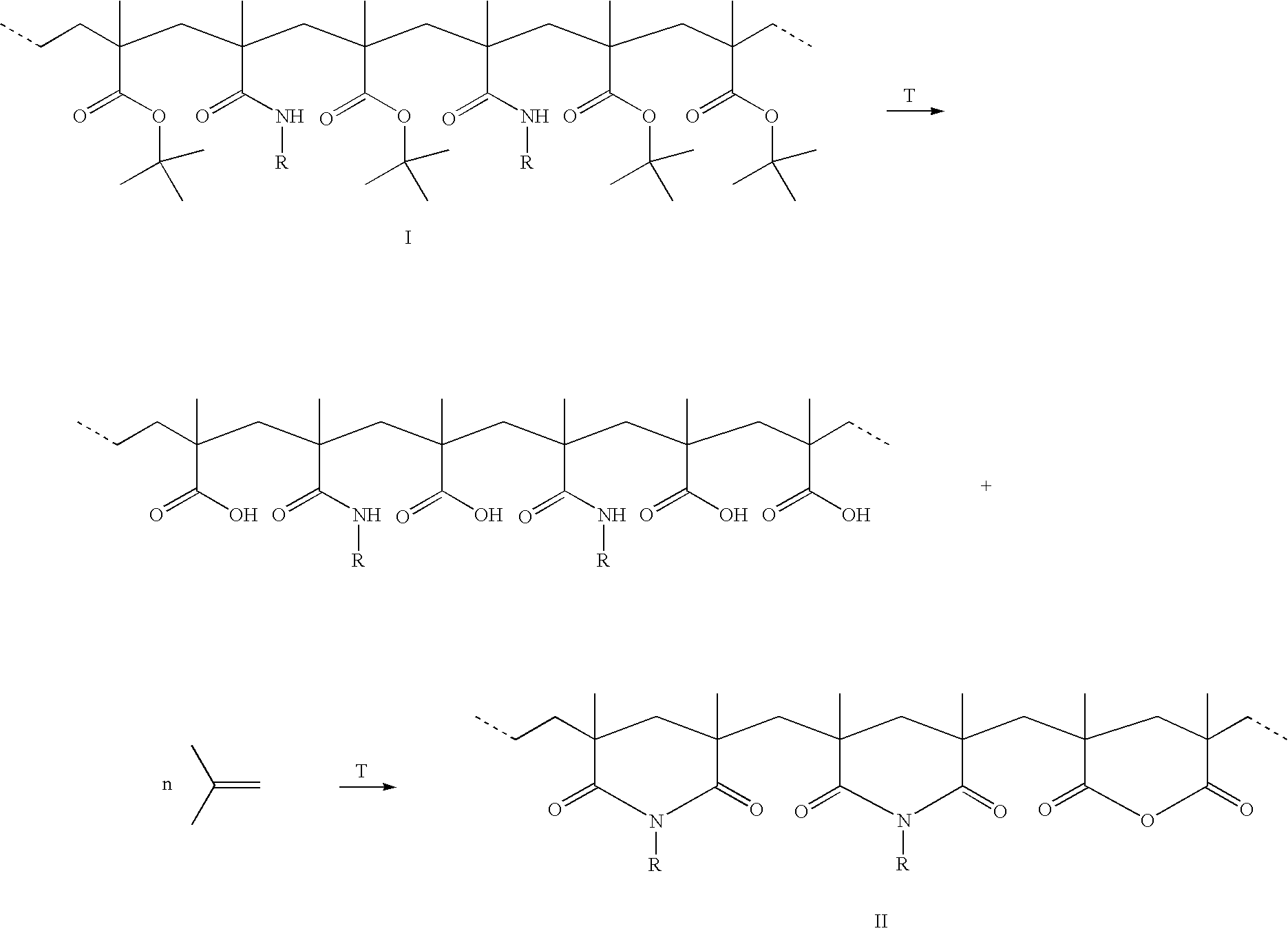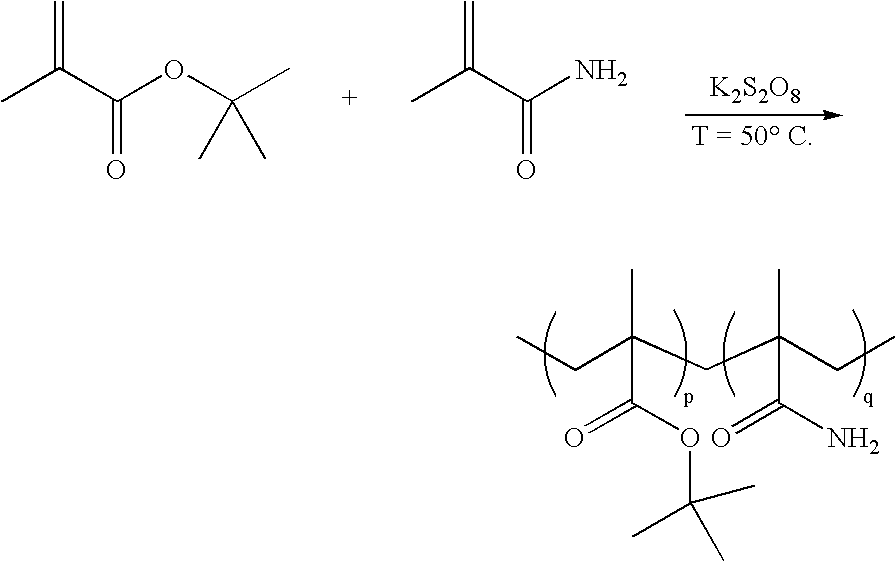Method for the synthesis of copolymers for producing polymethacrylimides
a technology of copolymer and polymethacrylimide, which is applied in the field of copolymerization, can solve the problems of high polymerization and is no longer fusible, difficult removal of polymerization heat in casting method, and destruction of material and possibly also of its immediate vicinity
- Summary
- Abstract
- Description
- Claims
- Application Information
AI Technical Summary
Benefits of technology
Problems solved by technology
Method used
Image
Examples
example 1
[0032] A 4 l three-necked flask equipped with a KPG stirrer and a nitrogen feed was evacuated three times and flushed with argon. 3400 ml of distilled water degassed in an ultrasonic bath were introduced into the flask. With the aid of an injection needle, argon was passed through the solution for 10 hours. 24.03 g (0.282 mol) of methacrylamide and 45.83 ml (0.282 mol) of tert-butyl methacrylate were then added under a countercurrent stream of argon. The reaction batch was degassed again several times with vigorous stirring and flushed with argon. After stirring for 1 h, the reaction mixture was heated to 40° C. 1 ml of the initiator solutions (redox initiators K2S2O8 and Na2SO2O5) was then pipetted into the reaction solution so that the initiator concentration, based on the monomers, was 1 mol %. The copolymerization was terminated after 4 h by cooling in an ice bath and by forcing in air. The precipitated copolymer was filtered off, washed with 3×100 ml of water and then dried in ...
example 2
[0033] The preparation and polymerization were effected analogously to example 1. However, only 0.41 g (4.8 mmol) of methacrylamide and 0.68 g (4.8 mmol) of tert-butyl methacrylate were used. The reaction was carried out in 250 ml three-necked flask at a temperature of 50° C. The polymerization was terminated after 4 h. The copolymer was obtained in a yield of 30%. According to NMR, the amide was incorporated in a proportion of 0.53. The weight average molecular weight was 233 100 g / mol, the number average molecular weight was 107 900 g / mol and the polydispersity was 2.2. The glass transition temperature of the copolymer is 122° C.
example 3
[0034] A 100 ml three-necked flask equipped with a nitrogen feed was evacuated three times and flushed with nitrogen. The initiator solutions (redox initiators: 0.215 g of K2S2O8 (0.8 mmol) and 0.15 g of Na2S2O5 in 23 ml of water) were then introduced into the three-necked flask. The reaction batch was stirred under a nitrogen atmosphere and heated to the respective reaction temperature (table 1). 2.84 g (20 mmol) of tert-butyl methacrylate and 1.7 g (20 mmol) of methacrylamide were dissolved in 7 ml of methanol. This mixture was added dropwise in the course of 15 min to the initiator solution while a gentle nitrogen stream was passed through the solution. The copolymerization was terminated after the respective reaction time (table 1) by adding 0.1 g of methylhydroquinone as inhibitor. The precipitated copolymer was filtered off, washed with 200 ml of methanol, filtered off, washed again with 3×50 ml of methanol and then dried in a high vacuum and analyzed.
TABLE 1Reaction conditi...
PUM
| Property | Measurement | Unit |
|---|---|---|
| Percent by mass | aaaaa | aaaaa |
| Percent by mass | aaaaa | aaaaa |
| Weight | aaaaa | aaaaa |
Abstract
Description
Claims
Application Information
 Login to View More
Login to View More - R&D
- Intellectual Property
- Life Sciences
- Materials
- Tech Scout
- Unparalleled Data Quality
- Higher Quality Content
- 60% Fewer Hallucinations
Browse by: Latest US Patents, China's latest patents, Technical Efficacy Thesaurus, Application Domain, Technology Topic, Popular Technical Reports.
© 2025 PatSnap. All rights reserved.Legal|Privacy policy|Modern Slavery Act Transparency Statement|Sitemap|About US| Contact US: help@patsnap.com



